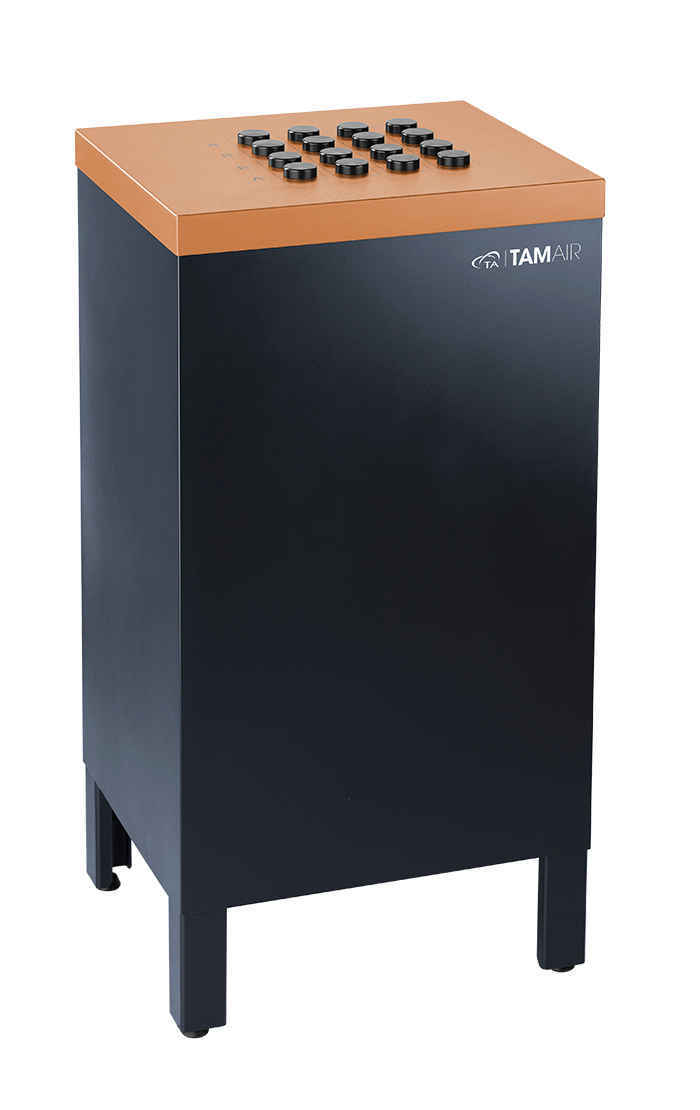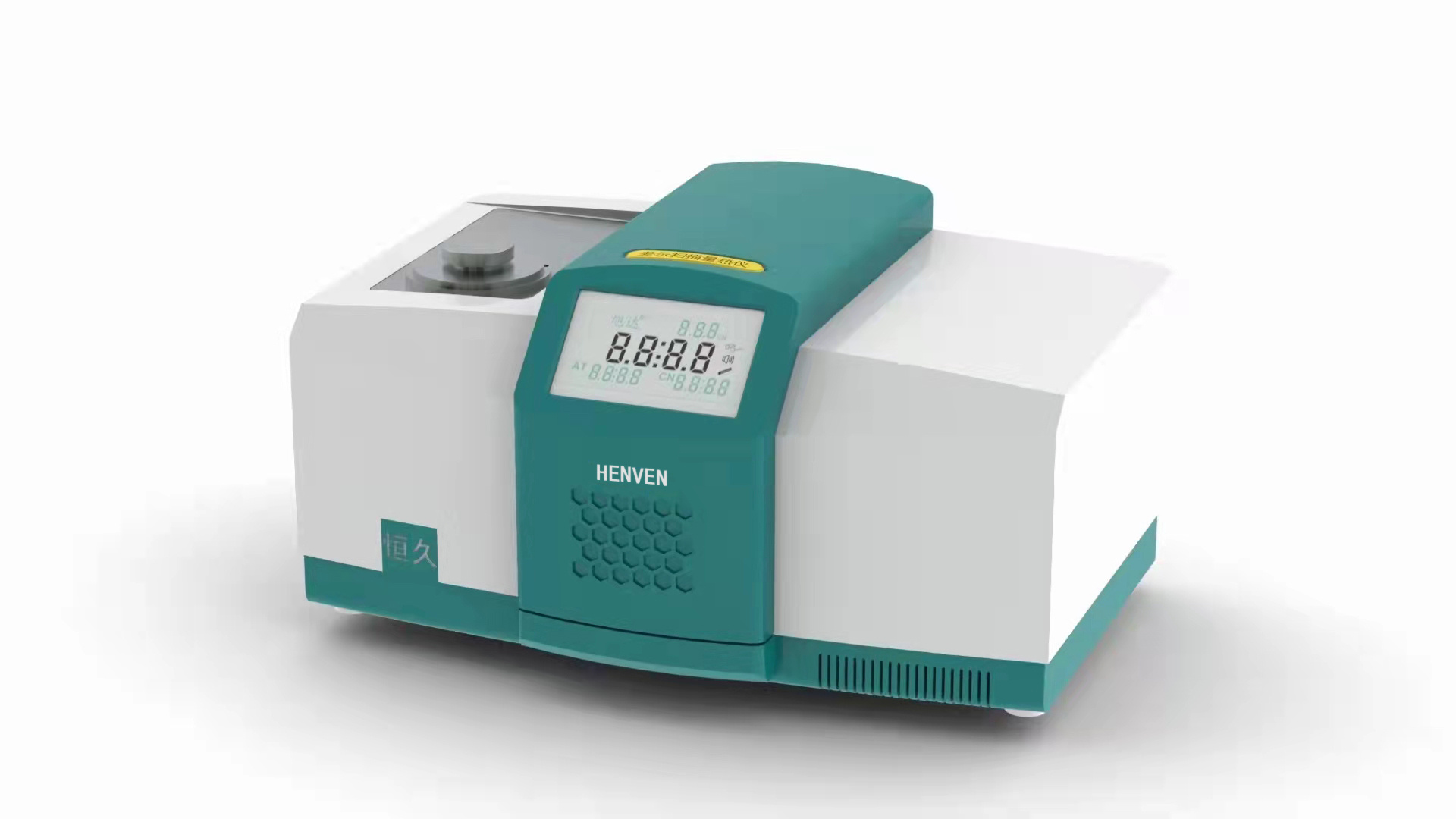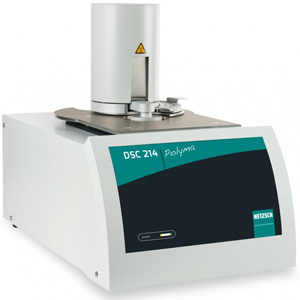方案详情文
智能文字提取功能测试中
A Microcalorimetric Study of Powder Surface Energetics G. Buckton, The University of London,England A. E. Beezer, The University, Canterbury, Kent,England TA Instruments,109 Lukens Drive,New Castle,DE 19720, USA INTRODUCTION The surface energetics of a powder plays an important role in the ease of prepara-tion, stability and dissolution of pharmaceutical products. Existing techniques for assess-ing surface energetics of powders (i.e. liquid penetration and contact angles) suffer frompractical and theoretical limitations as well as being somewhat subjective. The objective of this study was to evaluate the data obtained by microcalorimetrictechniques from which AH and other kinetic parameters of adsorption can be determined.Results were supplemented by data obtained by vacuum microbalance methods. EXPERIMENTAL Measurements of the enthalpy of adsorption (AH) were undertaken using an LKB10700 microcalorimeter. A specially constructed calorimeter cell was connected to a vac-uum pump and water reservoir. A series of powders was placed in the cell, outgassed andweighed quickly to allow minimal adsorption from the atmosphere. The powders werethen assayed under repeated adsorption/desorption experiments in the microcalorimeter. Itis important to note that 2277 Thermal Activity Monitor, TAM, the successor to the LKB10700 has now been used in such studies. RESULTS Enthalpy of adsorption This was calculated by subtraction of the heat flow produced by control experimentsand corrected for moles of water adsorbed. Gibb’s function and entropy of adsorption The standard state is assumed to be the number of moles of water adsorbed [b] pergram of powder at saturated vapour pressure [p] of water. The equilibrium constant is thusdefined as: The Gibb’s function is obtained by:AG=-RTInk The entropy of adsorption can then be obtained from: AG=AH-TAS The thermodynamic parameters are shown in Table 1. Kinetics of Adsorption The experiments conducted in this study can be regarded as batch experiments, theexcess heat output decay function can thus be compared to the decay from an electrical calibration peak. The logarithm of the difference in area under the heat flow curve com-pared to the calibration curve plotted against time, can give an indication of the kinetics ofthe reaction; the gradient being equal to the apparent first-order rate constant. DISCUSSION Previous studies have shown that the use of contact angles for the determinationof AG and subsequent calculations of AS for wetting processes are not suitable. Micro-calorimetric techniques coupled with data from the vacuum microbalance have shown itis possible to obtain direct measurements of AH for the adsorption process, and AG froma single adsorption isotherm. The combination of methods therefore allows the study ofsmall changes in powder surface energetics which affect the adsorption process. Values of AG were the same for each powder because the same amount of water wasadsorbed (Table 1). However, AH values were found to differ significantly between eachof the powders. Liquid penetration data showed the ranking of powders in terms of hydro-phobicity to be different to results from microcalorimetric techniques. Furthermore, micro-calorimetric data revealed that wetting of the more hydrophobic powders was enthalpicallyfavoured and this was associated with a large unfavourable entropy term. Thus, previouspredictions on the wetting process using enthalpy data derived from classical methods ofanalysis may not be completely accurate. Quantity of Adsorbed Water AH AG AS AH. AS. Powder (mg/10,000 mg) (kJ-mol) (k.J-mol) (J-moF,moF) (kJ-mol) (J-mor, mol) Amylobarbitone 0.080 -25.5 +38.4 -214.4 -66.8 -353.0 Pentobarbitone 0.080 -12.7 +38.4 -171.5 -67.5 -355.4 Phenobarbitone 0.074 -8.1 +38.6 -156.7 -65.2 -348.3 Butobarbitone 0.080 -4.5 +38.4 -144.0 -61.4 -334.9 Table 1.The thermodynamic functions ofadsorption at 25C CONCLUSION The combination of microcalorimetric and vacuum microbalance techniques allowsthe possibility of calculating the thermodynamic parameters associated with the wettingprocess and in addition, gives insight into the mechanism of wetting. REFERENCES 1. G. Buckton and A.E. Beezer. International Journal of Pharmaceutics 41:139-145(1988) NOTE Application Note written by M. Shafiq, Thermo-Metric AB. M The surface energetics of a powder plays an important role in the ease of preparation, stability and dissolution of pharmaceutical products. Existing techniques for assessing surface energetics of powders (i.e. liquid penetration and contact angles) suffer from practical and theoretical limitations as well as being somewhat subjective.The objective of this study was to evaluate the data obtained by microcalorimetric techniques from which ∆H and other kinetic parameters of adsorption can be determined. Results were supplemented by data obtained by vacuum microbalance methods.
关闭-
1/2
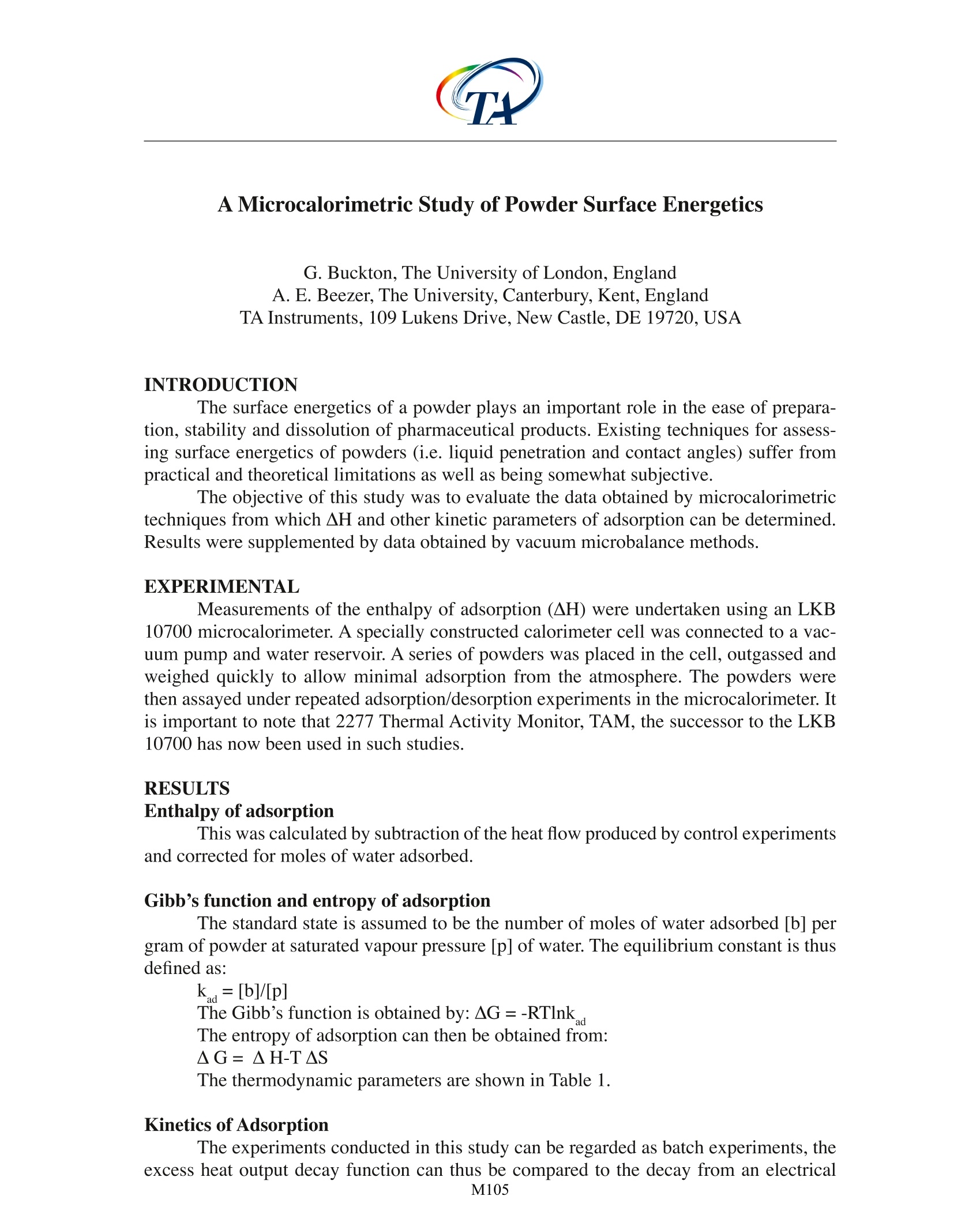
-
2/2
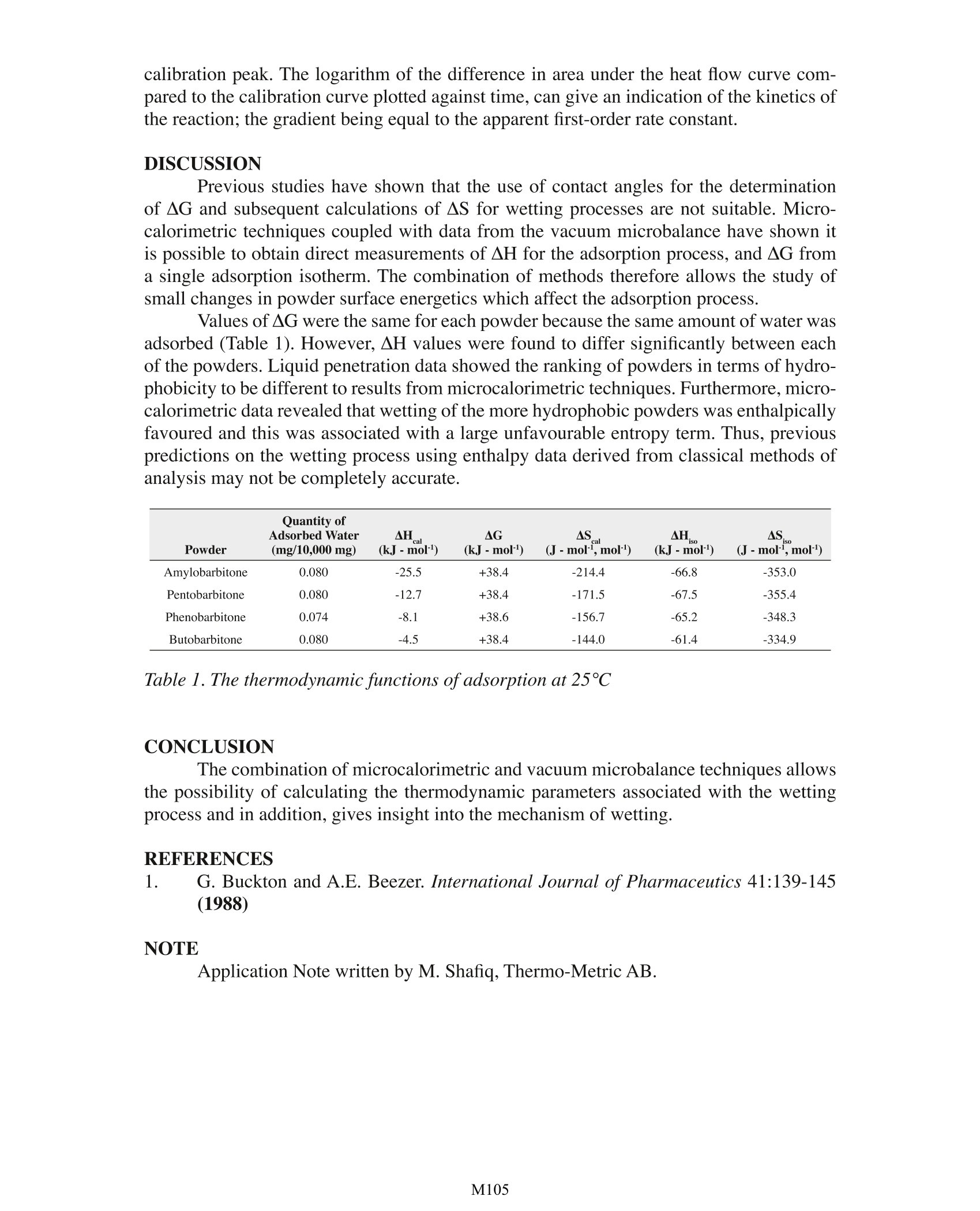
产品配置单
TA仪器为您提供《粉末中表面能检测方案(差示扫描量热)》,该方案主要用于涂料中化学性能检测,参考标准《暂无》,《粉末中表面能检测方案(差示扫描量热)》用到的仪器有TA仪器+等温量热仪+TAM Air。
我要纠错


